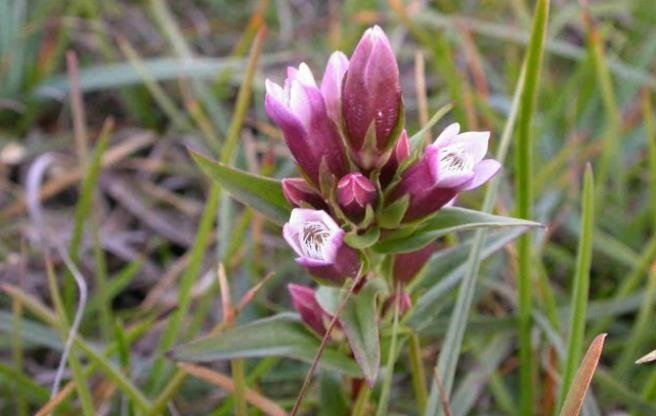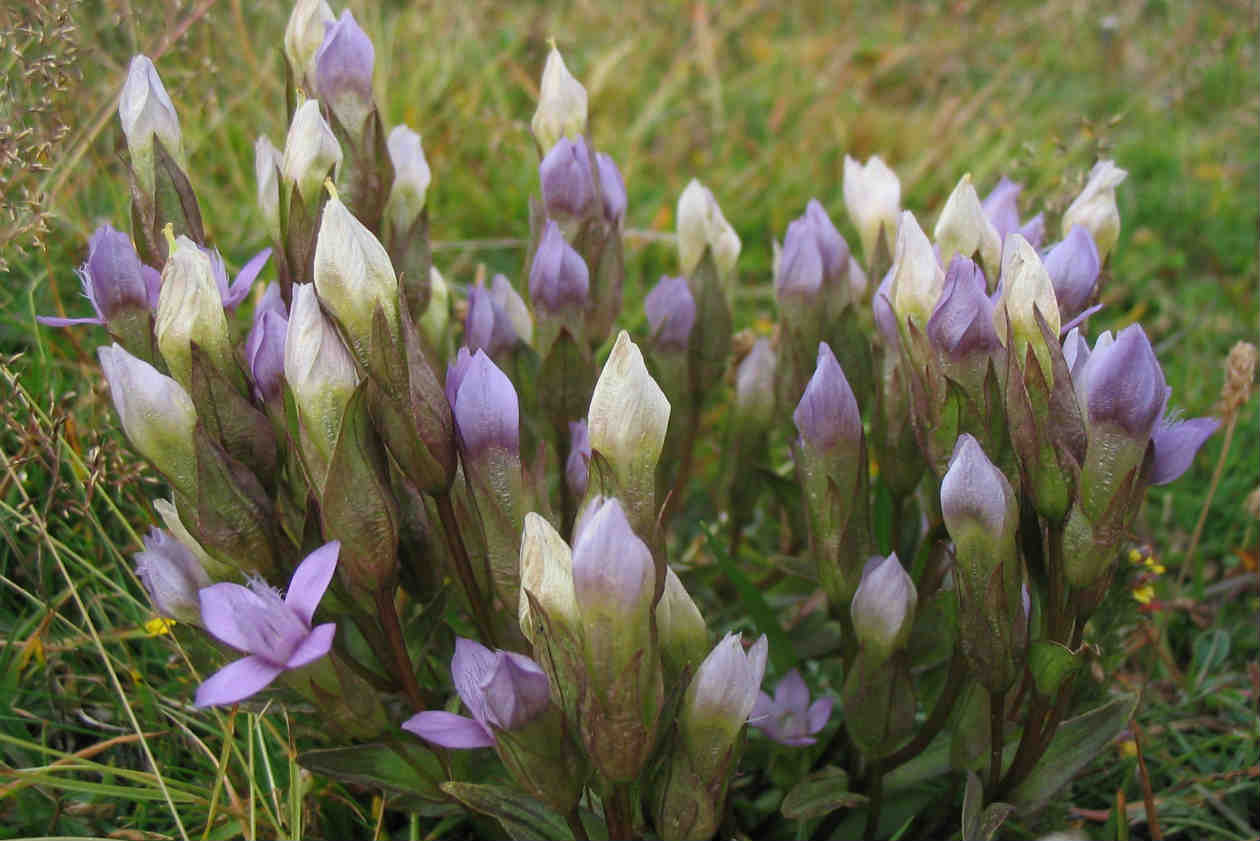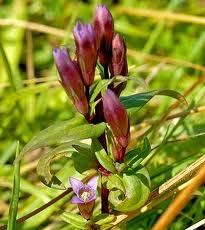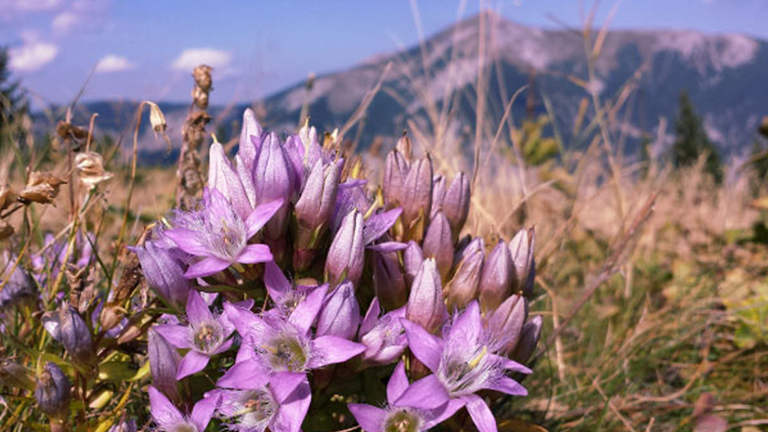Hercampuri
What is the hercampuri?
The hercampuri is a wild herb of the family of the Gentianáceas. It has different names, such as hercampure, hircampuri, bitter tea, chavín tea or hercapura. It is native to Peru, and grows in the Alto Andina region, at between 3500 and 4300 meters above sea level, on the shore of lakes and wet places, especially in the departments of Puno, Huánuco, Junín, Ayacucho, Ancash, Amazonas, Cusco, Cerro de Pasco and Cajamarca. They are small plants, about 5 centimeters high, with deep and cracked roots, violet-lilac flowers, leaves less than one centimeter of a dark green color, and capsule-shaped fruits with a large amount of dark seeds. It has important medicinal properties, hence the leaves and stems are harvested at the time of flowering (May to July).

hercampuri-andino
What are its uses?
The hercampuri is used in the cure of liver and stomach ailments, as a diuretic, to lower blood sugar and control diabetes and in anti-obesity treatments, as it helps to lose body fat. The most important components are xanthones, alkaloids, eritaurine, saponins, glycosides, aluminum, calcium, potassium, sodium and chlorine.
It should be noted that the presence of bitter substances (eritaurins) causes the cleansing of the liver and the decrease of cholesterol harmful to health (LDL), which helps to lose weight and improve overall health. The xanthones have antifungal and microbicide properties, polyphenols act as antioxidants, protecting liver cells, and saponins contribute to the elimination of fats from the body. This component acts on the intestines, forming an insoluble compound with cholesterol that complicates its absorption and stimulates it to be eliminated.
What benefits does it provide?
1) It is cholagogue and choleretic, that is to say, it stimulates the secretion and excretion of bile, which favors intestinal cleansing and allows to treat constipation, having positive effects against diseases of the liver, such as fatty liver.
2) Since it is hypocholesterolemic, it mobilizes fats from the body to the liver, where they are metabolized to bile acids. It diminishes the “harmful” cholesterol for health known as LDL, it allows the purification of the organism, and thus its better functioning.
3) It contributes to a better circulation of the blood, which allows to regulate blood pressure, and avoid other associated complications, such as varicose veins and cellulitis.
4) Decreases blood glucose, a very useful effect in those who have diabetes, since it allows greater control.

Hercampuri
5) It is diuretic: It increases the production of urine by the kidneys, which favors the elimination of toxins from the body.
6) It is antimicrobial and antifungal, so it has interesting disinfectant properties that are applied in the treatment of infectious diseases of the skin, such as acne.
7) Since it is hepatoprotective, it has the ability to tone, regulate your enzymatic metabolism, strengthen and detoxify the liver. It serves to relieve the symptoms of hepatitis and control the production of gallstones.
8) It is used for slimming. Not only improves the metabolism of fats, but several of its components promote the enzymatic production of the body and the secretion of digestive juices, contributing to a better digestion of food and to avoid the formation of gases. On the other hand, naturally suppresses the appetite, allowing better control of consumption.

hercampuri flower
History and varieties
There are about 170 species in Peru known at the time belonging to the same botanical family as the hercampuri, characterized by its bitter taste, which gives them similar properties. One of the best known is the corpus huay (Gentianella bicolor), which is hypoglycemic, protective liver, lowers cholesterol, allows the treatment of anemia and low fever. Its capacity to fight artitis and the ailments caused by rheumatism is under study.

hercampuri fields
The name hercampuri comes from the word “hjircan pureck”, which has as meaning “the one who walks from town to town”, referring to the doctors of the Inca empire who traveled the villages healing the sick with medicinal plants. They used it to fight fevers, probably caused by malaria, to relieve stomach pains and treat liver problems caused by inflammation. Traditionally, its aqueous extract of the whole plant is used within Peruvian natural medicine to remedy liver conditions, such as hepatitis, gallbladder and pancreas, as digestive and cholagogue. It is remarkably used to prevent the appearance of gallstones. Nowadays, its use is interesting to combat obesity, lower cholesterol and control glucemia in diabetic patients.
Components of the Hercampuri:
• A very important component are saponins, which are substances that act on cholesterol in the intestinal tract, forming an insoluble compound, thus decreasing its absorption.
• Another component is eritaurin (bitter substance of Hercampuri), together with bitter main glycosides, give it the properties of cholagogue (facilitates the secretion of bile).
• Choleretic (secretion and excretion of bile).
• Hypocholesterolemic (reduces cholesterol) and diuretic (increases the secretion of urine).
Recipes
It can be consumed as an infusion, boiling 25 grams in a liter of water, boiling it for 5 minutes and drinking 1 to 4 cups a day. In the case of slimming treatments or to improve the evacuation, it should be drunk on an empty stomach. This form of consumption has its bitter taste as a disadvantage, so some people choose to use dry hercampuri capsules already formulated, which are consumed prior to meals.



